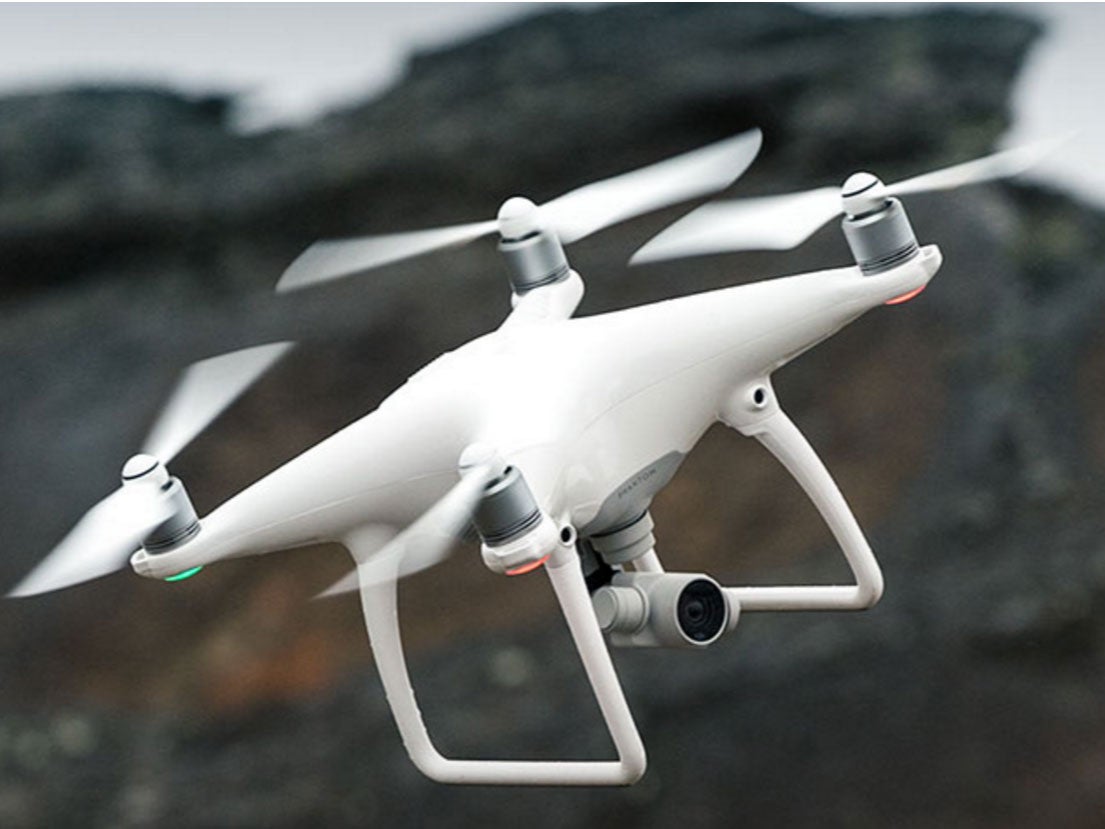DJI unveils the Phantom 4 semi-autonomous drone
DJI's new drone is equipped with a number of autonomous modes to make flying and filming easier

Your support helps us to tell the story
From reproductive rights to climate change to Big Tech, The Independent is on the ground when the story is developing. Whether it's investigating the financials of Elon Musk's pro-Trump PAC or producing our latest documentary, 'The A Word', which shines a light on the American women fighting for reproductive rights, we know how important it is to parse out the facts from the messaging.
At such a critical moment in US history, we need reporters on the ground. Your donation allows us to keep sending journalists to speak to both sides of the story.
The Independent is trusted by Americans across the entire political spectrum. And unlike many other quality news outlets, we choose not to lock Americans out of our reporting and analysis with paywalls. We believe quality journalism should be available to everyone, paid for by those who can afford it.
Your support makes all the difference.Drone manufacturer DJI has just announced the Phantom 4, its latest model, which could make flying more accessible to beginners than ever before.
A bevy of new cameras all over the drone's body allow it to keep an eye on its surroundings at all times. If a drone on a steady path realises it's within 50 feet of an obstacle, it'll slow down. If it comes within 6 feet, it'll either stop or pick a different route to go around or over the object.
This is just in the Phantom 4's semi-autonomous mode - more experienced pilots will be able to use Sport Mode to fly freely, without bumping up against these safety measures.
They come in especially handy when used alongside the 'TapFly' mode, an easy way to pilot the drone via an app.
Users get a live feed of the drone's view on a phone or tablet, and can simply tap to choose where they want to fly. If they change direction, the drone will switch to the new route smoothly.
Another new feature is 'ActiveTrack' designed to make the drone even more useful to filmmakers. When using the app, pilots trace an outline around a person or a vehicle. The drone locks on to this target and follows it around to keep it in frame, avoiding obstacles along the way.
This makes difficult 'orbit' or flyover shots much easier - when locked on, pilots just need to move the control stick in a certain direction and the drone will do the rest.
Redesigns to the drone itself apparently make it more aerodynamic, and it comes with a beefier battery and better camera than the Phantom 3.
Speaking to The Verge, DJI chief executive Frank Wang said: "People have dreamed about one day having a drone collaborate creatively with them. That day has arrived."
Slightly worryingly, the Phantom 4 will allow people to start flying drones without actually knowing how to fly them - if they use TapFly, beginner pilots could pilot the Phantom 4 without coming near a two-stick controller.
However, DJI seems confident that the drone's autonomous hazard avoidance will prevent any problems.
The Phantom 4 is available now for £1,229 from DJI's website. It's also being sold by Apple for the same price.
Join our commenting forum
Join thought-provoking conversations, follow other Independent readers and see their replies
Comments